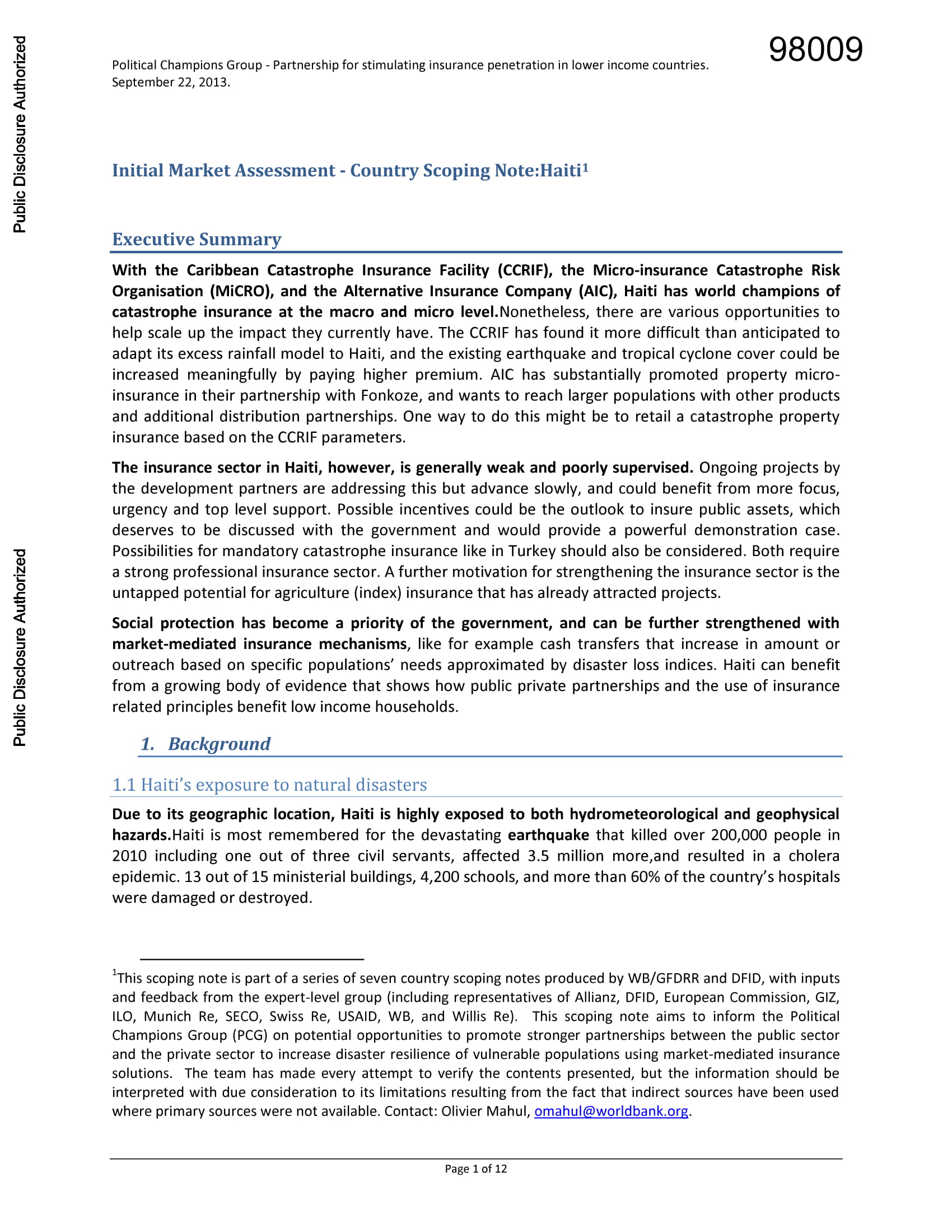With the Caribbean Catastrophe Insurance Facility (CCRIF), the Micro-insurance Catastrophe Risk Organisation (MiCRO), and the Alternative Insurance Company (AIC), Haiti has world champions of catastrophe insurance at the macro and micro level. Nonetheless, there are various opportunities to help scale up the impact they currently have. The CCRIF has found it more difficult than anticipated to adapt its excess rainfall model to Haiti, and the existing earthquake and tropical cyclone cover could be increased meaningfully by paying higher premium. AIC has substantially promoted property micro-insurance in their partnership with Fonkoze, and wants to reach larger populations with other products
and additional distribution partnerships. One way to do this might be to retail a catastrophe property insurance based on the CCRIF parameters.
The insurance sector in Haiti, however, is generally weak and poorly supervised. Ongoing projects by the development partners are addressing this but advance slowly, and could benefit from more focus,
urgency and top level support. Possible incentives could be the outlook to insure public assets, which deserves to be discussed with the government and would provide a powerful demonstration case. Possibilities for mandatory catastrophe insurance like in Turkey should also be considered. Both require a strong professional insurance sector. A further motivation for strengthening the insurance sector is the untapped potential for agriculture (index) insurance that has already attracted projects.
Social protection has become a priority of the government, and can be further strengthened with market-mediated insurance mechanisms, like for example cash transfers that increase in amount or outreach based on specific populations’ needs approximated by disaster loss indices. Haiti can benefit from a growing body of evidence that shows how public private partnerships and the use of insurance related principles benefit low income households.

